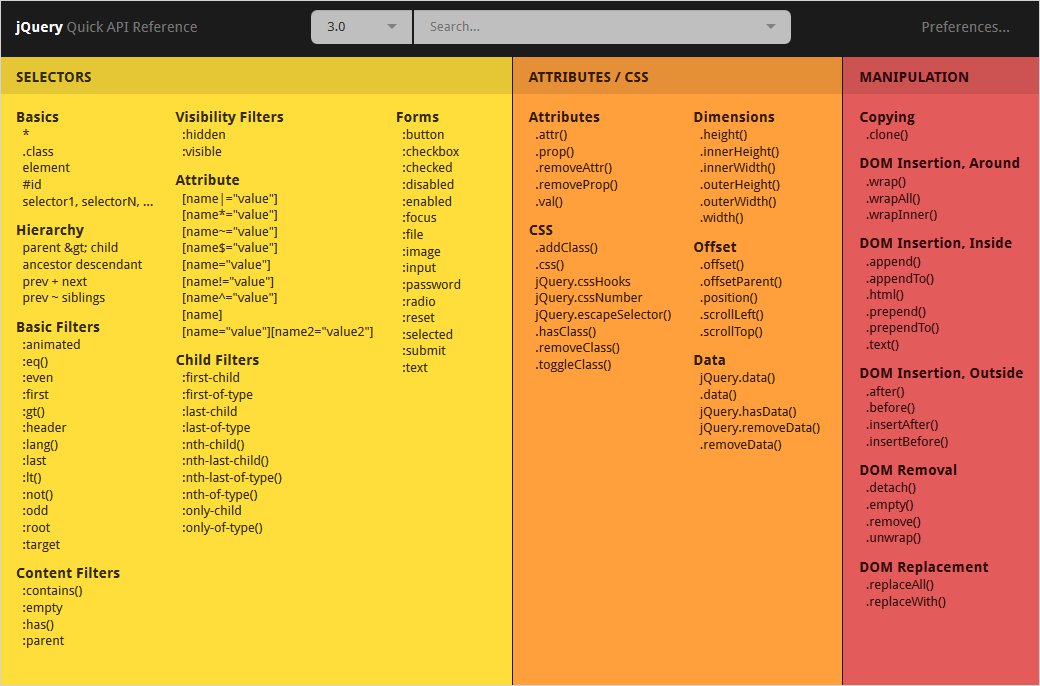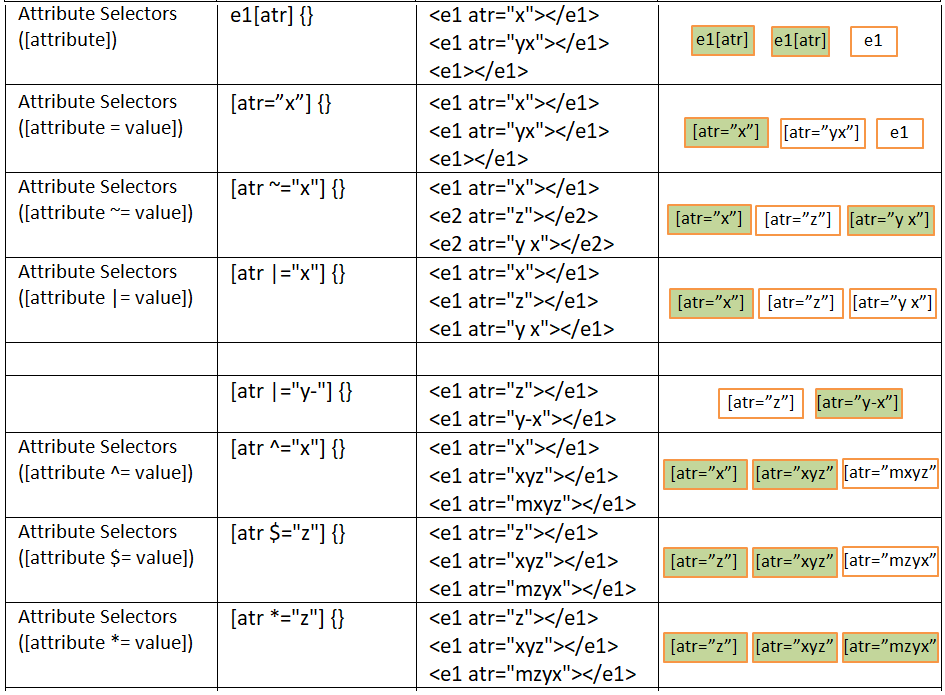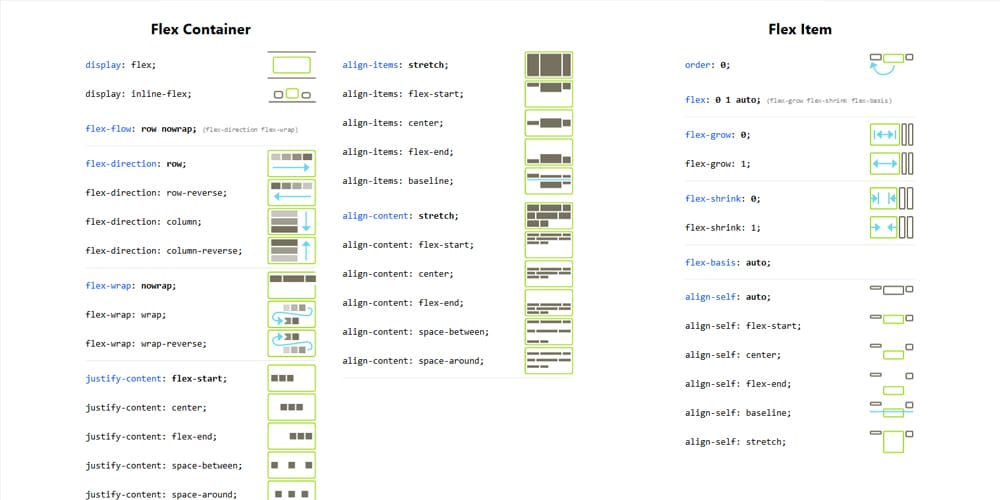Css Selectors Cheat Sheet
- A CSS rule set contains one or more selectors and one or more declarations. The selector(s), which in this example is h1, points to an HTML element. The declaration(s), which in this example are color: blue and text-align: center style the element with a property and value. The rule set is the main building block of a CSS sheet.
- CSS Cheat Sheet contains the most common style snippets: CSS gradient, background, button, font-family, border, radius, box and text shadow generators, color picker and more. All these and other useful web designer tools can be found on a single page.
- Since CSS has so many selectors and declarations that might be hard to remember, we’ve put together a complete CSS and CSS3 Cheat Sheet to help you master the language. Download CSS Cheat Sheet in.pdf. Download CSS Cheat Sheet in.jpg. Once you’ve downloaded the CSS Cheat Sheet, save the file to your device or print one out.
- The result is a printable CSS 3 scrib sheet, created and released exclusively for the readers of Smashing Magazine. Thank you for your great work, Chris Hanscom! In this post we present a printable CSS 3 Cheat Sheet (PDF), a complete listing of all the properties, selectors types and allowed values in the current CSS 3 specification from the.
- Css Code Cheat Sheet
- The Ultimate Css Selectors Cheat Sheet Pdf
- Css Selectors Cheat Sheet Pdf
- Css Selectors Cheat Sheet Free
- Css Style Cheat Sheet
- Css Selectors Cheat Sheet
Selector Types 23 Outline 25 WebsiteSetup.org - Beginner’s CSS Cheat Sheet 1. 3D / 2D Transform 25 Generated Content 26 Line Box 28 Hyperlink 31 Positioning 31 Ruby 32. Beginner’s CSS Cheat Sheet 20. Pseudo-Element::first-letter Adds special style to the first letter of a text::first-line.
What is CSS?
CSS is a foundational element of the Internet. CSS stands for Cascading Style Sheets. It was created in 1994 by Håkon Wium Lie during the early days of the modern World Wide Web. The “style” term in the acronym gives the one-word explanation of what CSS is. The coding language specifies the style and design elements of a website.
CSS is distinct from HTML (Hyper Text Markup Language), which specifies the content. Separating the style from the content allows website developers to better manage websites. HTML elements could be styled in-line in the early days of the Internet. Many browsers still support some HTML attributes for style, which mimic CSS.
For example, to make an item bold in CSS, the code used is font-weight: bold;. the code used in HTML is strong. The best practice for coding is to use CSS for styling and not use any in-line HTML styles.
One advantage of using CSS is that the design style can be separated from the in-line, on-page code. This means that developers can edit the text in one location and the changes will be reflected across the website.
This benefit is realized if the developers specifies the names of CSS Classes and IDs in the code on the page. In conjunction the developer writes the CSS code to style elements in an external CSS file. Which will be placed in the head of your document.
With CSS code, all sorts of element design parameters can be specified. The color, size, spacing alignment, and other characteristics of blocks of text, images, and many other elements can be controlled. Modern CSS continues to evolve to give developers more and more control and creativity with design. The latest set of guidelines being developed is CSS3.
CSS Selectors
CSS Selectors are the foundation of using CSS. You use selectors to target specific elements that you want to style. Below is how the syntax works.

Descendant
Selects all li within an unordered list ul

- ul li
Adjacent
Selects all p elements that are placed immediately after ul elements
- ul + p
Direct children
Selects all a elements where the parent is a p element
- p > a
Sibling combinator
Selects every a element that are preceded by a p element
- p ~ a
Attributes
Selects all elements with a target attribute
- a[target]
Backgrounds
Property
Values
background
- background-color
- background-image
- background-repeat
- background-attachment
- background-position
background (shorthand)
Example
Property
Values
background-position
- top left
- top center
- center left
- center center
- center right
- bottom left
- bottom center
- bottom right
- x-%
- y-%
- x-pos
- y-pos
Property
Values
Property
Values
Property
Values
Property
Values
Property
Values

Borders
Property
Values
border (shorthand)
Example
Property
Values
border-style
- none
- hidden
- dotted
- dashed
- solid
- double
- groove
- dashed
- ridge
- inset
- outset
Property
Values
border-bottom
- border-bottom-width
- border-style
- border-color
border-left
- border-left-width
- border-style
- border-color
Property
Values
Property
Values
Property
Values
Property
Values
Property
Values
Property
Values
Property
Values
Property
Values
Property
Values
border-top
- border-top-width
- border-style
- border-color
Property
Values
Property
Values
Property
Values
Property
Values
border-right
- border-top-width
- border-style
- border-color
border-radius
- border-radius
- border-top-right-radius
- border-bottom-right-radius
- border-bottom-left-radius
- border-top-left-radius
Property
Values
Property
Values
Box Model
Property
Values
Property
Values
Property
Values
Property
Values
Property
Values
Property
Values
Property
Values
Property
Values
margin
- margin-top
- margin-right
- margin-bottom
- margin-left
margin (shorthand)
Example
Property
Values
Property
Values
Property
Values
Property
Values
padding
- padding-top
- padding-right
- padding-bottom
- padding-left
padding (shorthand)
Example
Property
Values
Property
Values
Property
Values
Property
Values
display
- inline
- inline-block
- block
- flex
- inline-flex
- grid
- inline-grid
- table
- none
- initial
- inherit
Property
Values
Property
Values
Property
Values
Property
Values
Text
Property
Values
Property
Values
Property
Values
Property
Values
Property
Values
text-decoration
- none
- underline
- overline
- line-thorugh
- blink
Property
Values
word-break
- normal
- keep-all
- loose
- break-strict
- break-all
Property
Values
Property
Values
Property
Values
Property
Values
Property
Values
Font
Property
Values
font
- font-style
- font-weight
- font-size/line-height
- font-family
Property
Values
Property
Values
Property
Values
Property
Values
Property
Values
font-weight
- lighter
- normal
- bold
- bolder
- 100
- 200
- 300
- 400
- 500
- 600
- 700
- 800
- 900
- inherit
Lists
list-style

- list-style-type
- list-style-position
- list-style-image
These are just a few. To see all list style types visit w3schools.
Property
Values
Colors
Property
Values
Tables
Property
Values
Property
Values
Property
Values
Property
Values
Property
Values
Animations
Property
Values
animation
- animation-name
- animation-duration
- animation-timing-function
- animation-delay
- animation-iteration-count
- animation-direction
Property
Values
Property
Values
Property
Values
animation-timing-function
- ease
- linear
- ease-in
- ease-out
- ease-in-out
- cubic-Bezier
Css Code Cheat Sheet
Property
Values
Transitions
Property
Values
transition
- transition-property
- transition-duration
- transition-duration
- transition-timing-function
- transition-delay
Property
Values
Property
Values
Property
Values
The Ultimate Css Selectors Cheat Sheet Pdf
transition-timing-function
- ease
- linear
- ease-in
- ease-out
- ease-in-out
- cubicBezier
Recieve resources directly to your inbox
Sign up to get weekly insights & inspiration in your inbox.
Please enable JavaScript to view the comments powered by Disqus.Introduction: : CSS Selectors help to select HTML elements (ex: DIV, P, H1) to apply styles. Here different CSS selectors are explained with examples and DOM tree.
Selects all child elements under the parent element. Here style is applied to every element under the parent element. Its weight is more and to be used with care.
Above example sets text color red and background color green to all elements inside the body(parent) element.
2. Class Selector
Selects specified CSS class applied elements on the page. CSS class selector name starts with “.” followed by name.
Above example,
- Sets text color green to CSS class “.heading” applied H1 element.
- Sets text color red to CSS class “.firstItem” applied two P elements.
3. ID Selector

Selects element which has a specified ID name. CSS ID selector name starts with “#” followed by name.
Note: ID name to be unique in a web page.
Above example,
- Sets text color green to element with ID “headerElement”.
- Sets text color red to element with ID “firstElement”.
Css Selectors Cheat Sheet Pdf
4. Element Selector
Selects elements based on element type.
Above example sets font weight bold to all P elements on the page.
5. Descendant Selector
Css Selectors Cheat Sheet Free
Selects all specified descendant child elements under the parent element.
Css Style Cheat Sheet
Above example sets font background color green to all decedent P child elements under the DIV parent element (<div>).
6. Child Selector
Selects all specified immediate child elements under the parent element.
Above example sets font background color green to immediate P child elements under the DIV parent element (<div>).
7. Adjacent Sibling Selector
Selects specified elements which are immediate to an adjacent element.
Css Selectors Cheat Sheet
Above example sets text color light green to P element which is next to DIV element with ID “divb” (<div>).
8. General Sibling Selector
Selects all specified elements which are siblings to an adjacent element.
Above example sets text color light green to all sibling P elements to DIV element with ID “divb” (<div>).
Note: 1) Using Document Object Model (DOM) tree, CSS selectors are explained. 2) Selected elements are marked (node border color is changed) and styled in the DOM tree. 3) Use CSS Attribute Selectors link to get details about different CSS attribute selectors.
CSS Selectors cheat sheet
Different CSS selectors combinations cheat sheet
Following table gives CSS code and list of CSS selectors used in the code.
| CSS | Selectors used |
|---|---|
| |
| |
| |
| |
| |
| |
| |
|
Related selectors are explained using following links.
